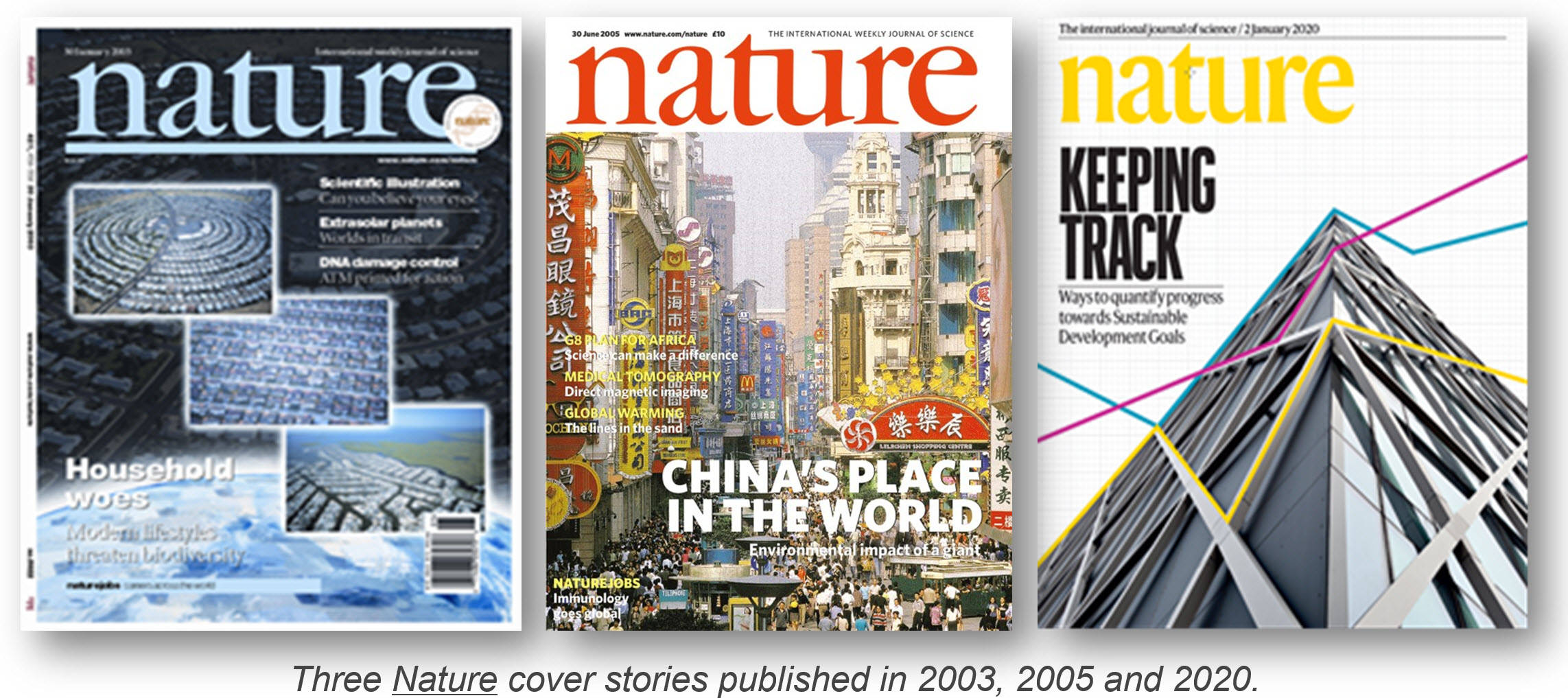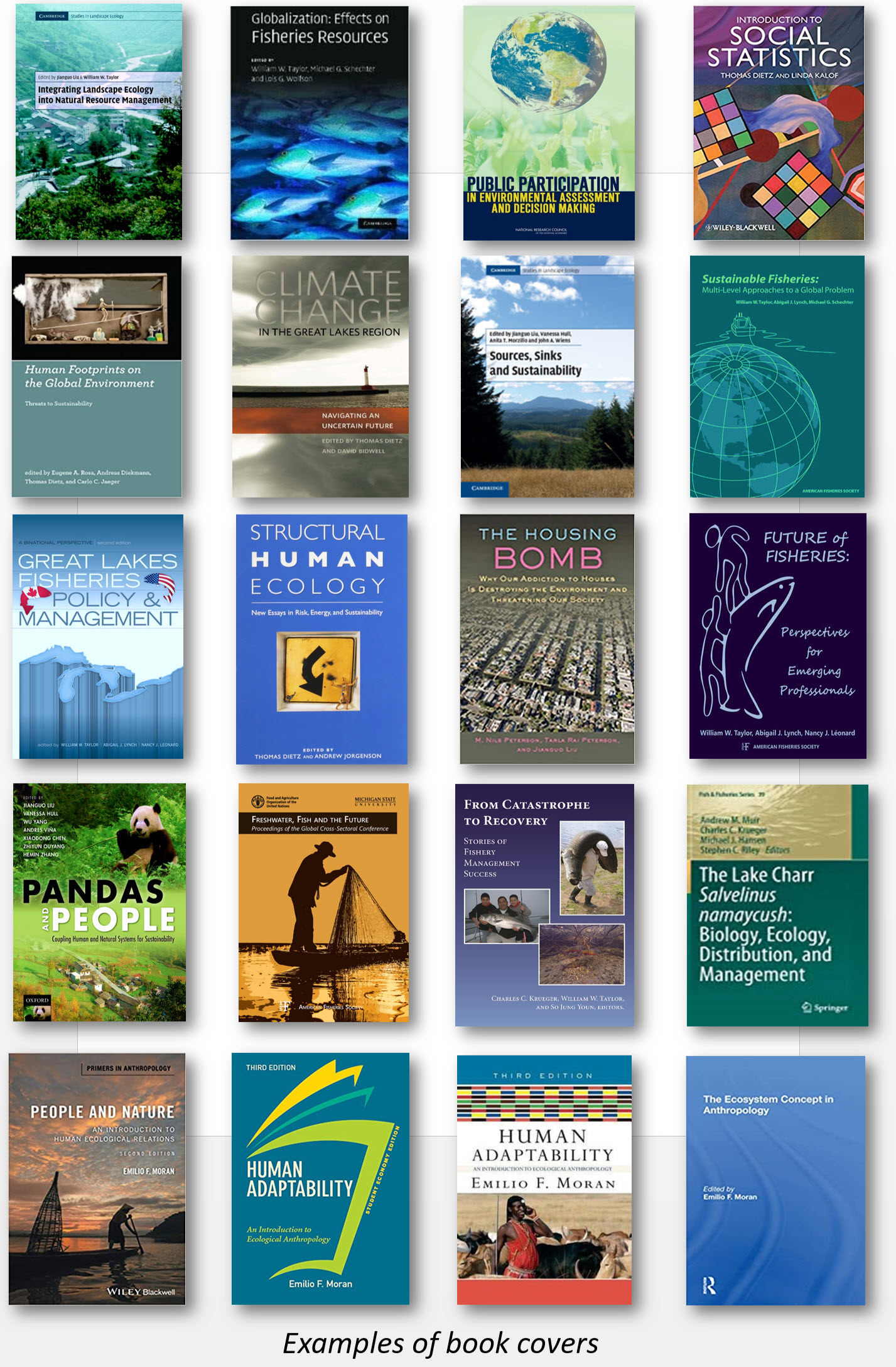Publications
Journal Articles
A list of journal articles published by CSIS members, including 3 cover stories in Nature, 24 appearances in Science, and 17 in PNAS (Proceedings of the National Academy of Sciences of the United States of America).
Books and Book Chapters
Selected books (edited books) and book chapters published by CSIS members.
Publications
-
ECOLOGY AND SOCIETY -- Complex effects of natural disasters on protected areas through altered telecouplings
Published on September 14, 2018
With long-term data collected in China’s Wolong Nature Reserve for giant pandas, we applied the telecoupling framework to assess the effects of the 2008 Wenchuan earthquake on telecouplings that link Wolong with the rest of the world -
NATURE SUSTAINABILITY - Nexus approaches to global sustainable development
Published on September 14, 2018
Recent quantitative studies have revealed nexus approaches can uncover synergies and detect trade-offs among sectors. Nexus approaches have potential to reduce negative surprises and promote integrated planning, management and governance. -
Effects of climate change and agronomic practice on changes in wheat phenology
Published on September 10, 2018
Using the Crop Environment Resource Synthesis-wheat model, we isolated the impacts of climate change, cultivar selection, and sowing date on phenological change of wheat. -
Detecting the 20 year city-size dynamics in China with a rank clock approach and DMSP/OLS nighttime data
Published on September 10, 2018
The results enrich our understanding of city-size evolution and have valuable implications for relevant decision makers and stakeholders. -
JOURNAL OF GEOGRAPHICAL SCIENCES - Spatio-temporal variations of the flood mitigation service of ecosystem under different climate scenarios in the Upper Reaches of Hanjiang River Basin, China
Published on August 27, 2018
Extreme rainstorm and the subsequent flood increasingly threaten the security of human society and ecological environment with aggravation of global climate change and anthropogenic activity in recent years -
On the banks of the Red Cedar: toward socio-ecologically robust riparian management in an iconic Michigan river
Published on July 19, 2018
We developed a framework for evaluating habitat associations of diatoms and native unionid mussels in the Red Cedar River using field collections and mixed-effects modeling to facilitate socio-ecologically informed riparian management. -
ECOLOGY AND SOCIETY -- Feedback of telecoupling: the case of a payments for ecosystem services program
Published on July 9, 2018
This study highlights that local human–nature interactions driven by telecouplings, such as human–wildlife conflicts, may trigger feedbacks that affect telecouplings themselves. -
Neglected environmental health impacts of China's supply-side structural reform
Published on June 6, 2018
“Supply-side structural reform” (SSSR) has been the most important ongoing economic reform in China since 2015, but its important environmental health effects have not been properly assessed -
ECOLOGICAL ECONOMICS - Changes in Human Well-being and Rural Livelihoods Under Natural Disasters
Published on May 31, 2018
Rural areas around the world are increasingly exposed to natural disasters. -
Polycentric Transformation in Kenyan Water Governance: A Dynamic Analysis of Institutional and Social-Ecological Change
Published on May 31, 2018
Beginning in 2002, Kenyan water governance transitioned from a monocentric, topâ€down system to one exhibiting traits of polycentricity -
Household-level heterogeneity of water resources within common-pool resource systems
Published on May 31, 2018
Prior work has demonstrated the ability of common property systems to sustain institutional arrangements governing natural resources over long periods of time -
Assessing multi-level drivers of adaptation to climate variability and water insecurity in smallholder irrigation systems
Published on May 31, 2018
In this study we investigate smallholder adaptation in Kenya from multiple levels. -
Tsetse fly control in Kenya's spatially and temporally dynamic control reservoirs: A cost analysis
Published on May 31, 2018
Human African trypanosomiasis (HAT) and animal African trypanosomiasis (AAT) are significant health concerns throughout much of sub-Saharan Africa -
Crop diversification as a smallholder livelihood strategy within semi-arid agricultural systems near Mount Kenya
Published on May 31, 2018
Crop diversification is one strategy that smallholder farmers may employ to reduce their vulnerability in the face of global environmental change. -
APPLIED GEOGRAPHY -- The Telecoupling GeoApp: A Web-GIS application to systematically analyze telecouplings and sustainable development
Published on May 16, 2018
To operationalize the framework, we have developed the Telecoupling GeoApp, a new web-based component of the Telecoupling Toolbox that provides researchers and practitioners with a useful platform to address globally important issues. -
PNAS -- Importing food damages domestic environment: Evidence from global soybean trade
Published on May 9, 2018
Our study shows that international food trade can also lead to environmental pollution in importing countries. -
Spillover systems in a telecoupled Anthropocene: typology, methods, and governance for global sustainability
Published on May 9, 2018
The world has become increasingly telecoupled through distant flows of information, energy, people, organisms, goods, and matter -
Innovation diffusion within large environmental NGOs through informal network agents
Published on April 20, 2018
We conducted a network experiment to estimate the role of informal boundary spanners—individuals who cross internal organizational boundaries via their informal social networks—for diffusing innovations in a large ENGO. -
Global cropping intensity gaps: Increasing food production without cropland expansion
Published on March 28, 2018
To feed the world’s growing population, more food needs to be produced using currently available cropland -
Revealing pathways from payments for ecosystem services to socioeconomic outcomes
Published on March 22, 2018
Payments for ecosystem services (PES) programs have been widely implemented as a promising tool to conserve ecosystems while facilitating socioeconomic development





 Print
Print Email
Email